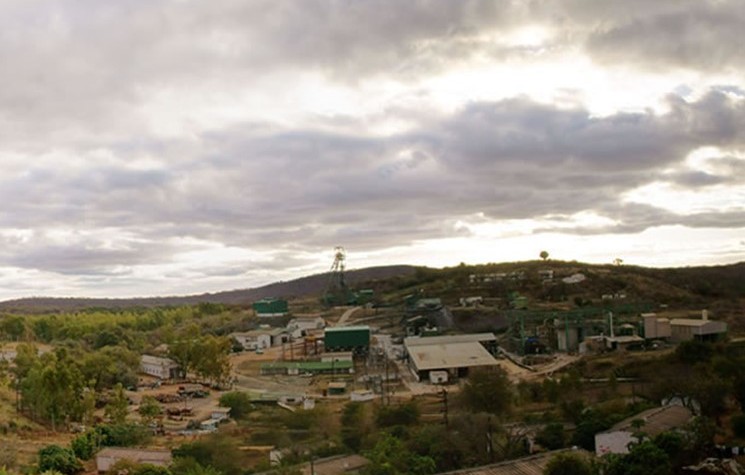Caledonia Mining Starts 2015 As It Means To Go On: With The Payment Of A Dividend And A Quarterly Increase In Production

By Alastair Ford
There’s been quite a lot of change at Caledonia Mining lately, what with a departing chairman, new personnel coming on board and a new plan for the company’s Blanket gold mine in Zimbabwe.
But things are starting to settle down now – the plan is in place and the focus is now all about the delivery, as Mark Learmonth, the long-time public face of Caledonia now newly appointed chief financial officer, explains.
“We brought on Dana Roets as chief operating officer”, he says. “Dana looked at the existing plan and said: ‘Guys, this isn’t going to work’”.
Dana is a man with much mining experience under his belt, most of which is germane to what Caledonia is now trying to do at Blanket, in particular in shaft sinking. The plan is to sink a new six metre diameter, four compartment central shaft from surface to a depth of 1,080 metres and to installing a new tramming loop on the 750 metre level in order to manage traffic flows.
Combined, those two developments ought to help Caledonia Mining avoid the logistical bottlenecks that would have built up under the previous, more incremental plan. There will be a cost, to be sure, but then Blanket is already a cash positive operation, and Caledonia itself, which owns 49 per cent of Blanket, has a sizeable cash pile of its own.
“We put the revised plan out on the 3rd November”, says Mark. “The PEA showed the project will deliver a 267 per cent internal rate of return at a gold price of US$1,250. The NPV is US$140 million, and half of that is ours.”
Neither Blanket’s nor Caledonia’s cash position is in doubt and, assuming that the gold price holds up, the project should be funded almost entirely by the cash generated by mining reserves and measured and indicated resources. The latest production numbers show an increase quarter-on-quarter, although it’s still down on the year.
“The management team is very excited about delivering this project”, says Mark. “By 2016 production should be increasing and cash costs coming down.” The plan is to be producing upwards of 75,000 ounces per year from 2021, following an initial US$50 million investment and a further US$20 million investment in 2018.
If the gold price plunges, then of course these plans might well be called into question. But all other things being equal, if the gold price holds up, as many commentators expect it will do, at least in the immediate term, then the plans make a lot of sense.
Indeed, Caledonia’s shareholders, who have become well used to a chunky yield from the company probably won’t even be troubled on that score. The Blanket operation itself will stop paying a dividend as work gets underway, but Caledonia won’t. It’s got more than US$20 million in cash to play with.
“So long as the mine doesn’t fall over we will continue to pay the dividend”, says Mark. But the dividend is only part of the value package that’s on offer here. The calculations are pretty simple.
Add the US$70 million NPV for Blanket that’s attributed to Caledonia to the US$30 million that’s owed to the company by its Zimbabwean indigenisation partners and the US$20-plus million that the company has in cash (allowing for the planned payments of dividends) and you get a total valuation of more than US$120 million. Divide that by the 52 million or so shares that are in issue and the valuation comes out at well over US$2.00 per share.
Set that against the current price of 40p or US$0.60 per share and the value gap is clear.
The job now is to set about closing it. Dana is swinging into action with his plan. A new chairman and a new chief executive are both in place. Mark is settling into his new role as CFO. And 2015 has already begun with the announcement of the company’s fifth quarterly dividend.
“We are very, very pumped up”, says Mark. “We’re quite excited.” It should be an interesting year.

Comments (0)